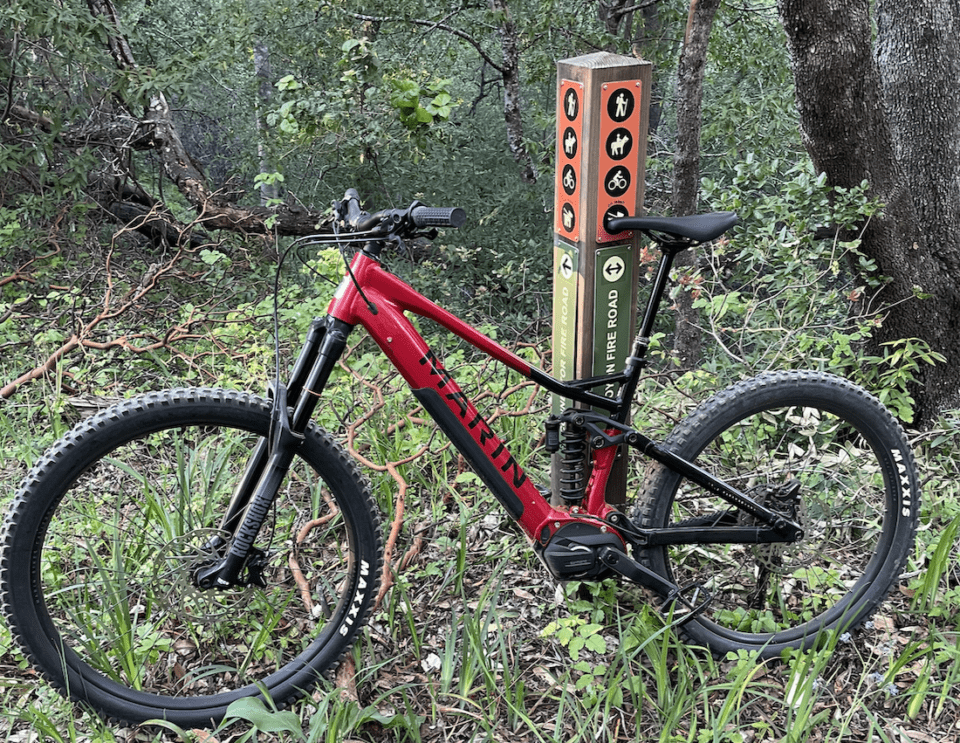I’m writing in response to the recent opinion piece by Molly Absolon, “How e-bikes are like snowboards.”
As an avid mountain biker and hiker, and also an environmental attorney and advocate for over 25 years, I can attest that the controversies and conflicts over traditional mountain bikes that Ms. Absolon mentions still exist, and are increasing due to the rapid expansion of recreation on public lands. There is substantial scientific research showing that mountain bikes cause erosion and frighten wildlife, and, unfortunately, there are persistent user conflicts on multiple-use trails. Also, all trails, including hiking and mountain bike trails, fragment wildlife habitat. Rapidly increasing E-mountain bike (eMTB) use on non-motorized trails is increasing these conflicts and impacts.
To be clear, studies show the significant benefits of cycling and being outside in nature, and eMTBs offer an alternative for people who may not be able to ride, for whatever reason, a traditional bike.
That said, all eMTBs, no matter whether they are Class I, II or III, have a motor and therefore are, by definition, considered “motorized vehicles.” As such they are not, in general, allowed on non-motorized trails. Nor should they be. The Forest Service classifies e-bikes as their own separate type of motorized vehicle. The Bureau of Land Management also identifies e-bikes as motorized vehicles, although the agency may exempt e-bikes from that definition under certain circumstances. Both agencies may allow e-bikes on roads and trails where traditional mountain bikes are allowed, only after they conduct an analysis of site-specific factors, including user conflicts and environmental impacts. Unfortunately, because of the lack of scientific data on e-bike impacts, these analyses are woefully inadequate.
To some, the controversy over eMTBs may stem from fear of change or a “you’re cheating” attitude. These are definitely not my concerns; nor are they the concerns of many hunters, horseback riders, hikers, and traditional mountain bikers that I’ve spoken with about the issue. Instead, many of these public land users have had conflicts with eMTBs, myself included.
Ms. Absolon’s sweeping claim that a 2015 International Mountain Bicycling Association (IMBA) study found no appreciable differences between the impacts of eMTBs and mountain bikes on soils is highly misleading. For starters, the study was conducted in a temperate rainforest of western Oregon – not the arid Colorado Plateau. And by its own admission the “study represents a very limited set of site and user conditions… No broad conclusions should be made from the observations presented.” Further, the study states that it “does not, and should not be interpreted to represent consensus on the environmental impacts of Class 1 eMTBs,” and that more research is needed.
To date, no studies have been completed on the impacts of eMTBs on soils, vegetation, wildlife, cultural resources, user conflicts, or any other resources, as found by the recently launched Federal Highway Administration’s (FHWA) The Future of E-Bikes on Public Lands Research Study.
As part of this study, the FHWA conducted a Literature Review and Gap Analysis, which found considerable data gaps in all four research areas: (1) Ecological, Cultural, and Historical Resource Impacts; (2) Safety Impacts (3) Social Impacts; and (4) Process for E-Bike Management. These data gaps mean that land management agencies currently have little to no information on the impacts of eMTBs or how to manage them. Until more research is done, the agencies should err on the side of caution and not treat eMTBs the same as traditional mountain bikes, under the false assumption that they have the same impacts and should be provided the same access as non-motorized mountain bikes.
Ms. Absolon is correct that “public land managers face the knotty problem of how much access to allow ebikes, and where, or whether to segregate them to their own trails.” Instead of reducing the already limited number of increasingly crowded non-motorized trails by allowing motorized bicycles, it makes much more sense for local, state, and federal agencies to recognize that e-bikes are their own class of motorized vehicle, with their own unique expectations and needs for trail design and opportunities. Those opportunities can be readily provided by limiting certain existing motorized trails to eMTBs, or eMTBs and traditional mountain bikes. This would preserve non-motorized trails, address user conflicts and safety concerns, and provide quiet recreation opportunities for e-bike users.
There’s a long history of hard work by conservationists and human-powered recreation user groups to get areas and trails designated as non-motorized – it wasn’t always that way. Adding a new use – motorized mountain bikes – to non-motorized trails is a slippery slope and will likely result in increased user conflicts on already crowded trails. Indeed, it already has. Also, it’s very hard to distinguish between e-bike classes, and thus almost impossible to enforce. I’d like to see manufacturers put something on their eMTBs so they can easily be identified as such, as well as identifying the class – that will go a long way to helping enforcement. And both manufacturers and dealers should be educating e-bike users on what trails are open to e-bikes and trail etiquette.
Yes, the West is crowded, and getting more so. Which is why it is essential for land managers to think proactively, creatively, and based on sound science, instead of reactively and in response to private industry groups.
Judi Brawer is a Wildlands Attorney for the Southern Utah Wilderness Alliance, a non-profit conservation group dedicated to preservation of the outstanding wilderness at the heart of the Colorado Plateau. She lives in Moab, Utah with her rescue dog, Callie, where she enjoys all the beauty, wilderness, and outdoor opportunities of southern Utah’s redrock country.


3 comments
Can you be more specific about the content of your article? After reading it, I still have some doubts. Hope you can help me.
Hoy mas que nunca los shows con webcam son una parte importante del espectaculo
There is obviously a bunch to identify about this. I think you made certain good points in features also.